7 Bank Stocks That Could Get a Lift From SBA Loans
A select group of bank stocks are in the midst of facilitating what might be the most ambitious lending program in U.S.


A select group of bank stocks are in the midst of facilitating what might be the most ambitious lending program in U.S. history. It's part of the $2 trillion CARES Act, intended to help small businesses survive the impact of the coronavirus.
As part of this plan, the U.S. Congress has funded $350 billion of small business loans. And businesses ran through this money so fast that the Senate has passed another $484 billion relief bill, $310 billion of which will go toward the Paycheck Protection Program – a major part of the CARES Act.
These loans are 100% federally guaranteed and are made through a network of approved Small Business Administration (SBA) lenders. Small businesses may borrow up to $10 million under this program, with loan amounts capped at 2.5 times monthly payroll costs. Borrowers that continue to pay their workers through the end of June may have the full loan amount forgiven at the end of the two-month period.
Hundreds of billions of dollars in SBA loan volumes could generate billions of dollars of processing fees for lenders. According to Financial Times, lenders receive a 5% fee on loans below $350,000, 3% for loans below $2 million and 1% for loans exceeding $2 million. An added benefit is that these loans carry minimal risk since repayment is guaranteed by the U.S. government.
These SBA loans are welcome news for a number of bank stocks that have been weighed down by the other economic impacts of the country's coronavirus-related shutdowns. Here, we'll look at seven leading SBA lenders that could get at least a small lift from this massive government loan program.
Data is as of April 21. Dividend yields are calculated by annualizing the most recent payout and dividing by the share price.
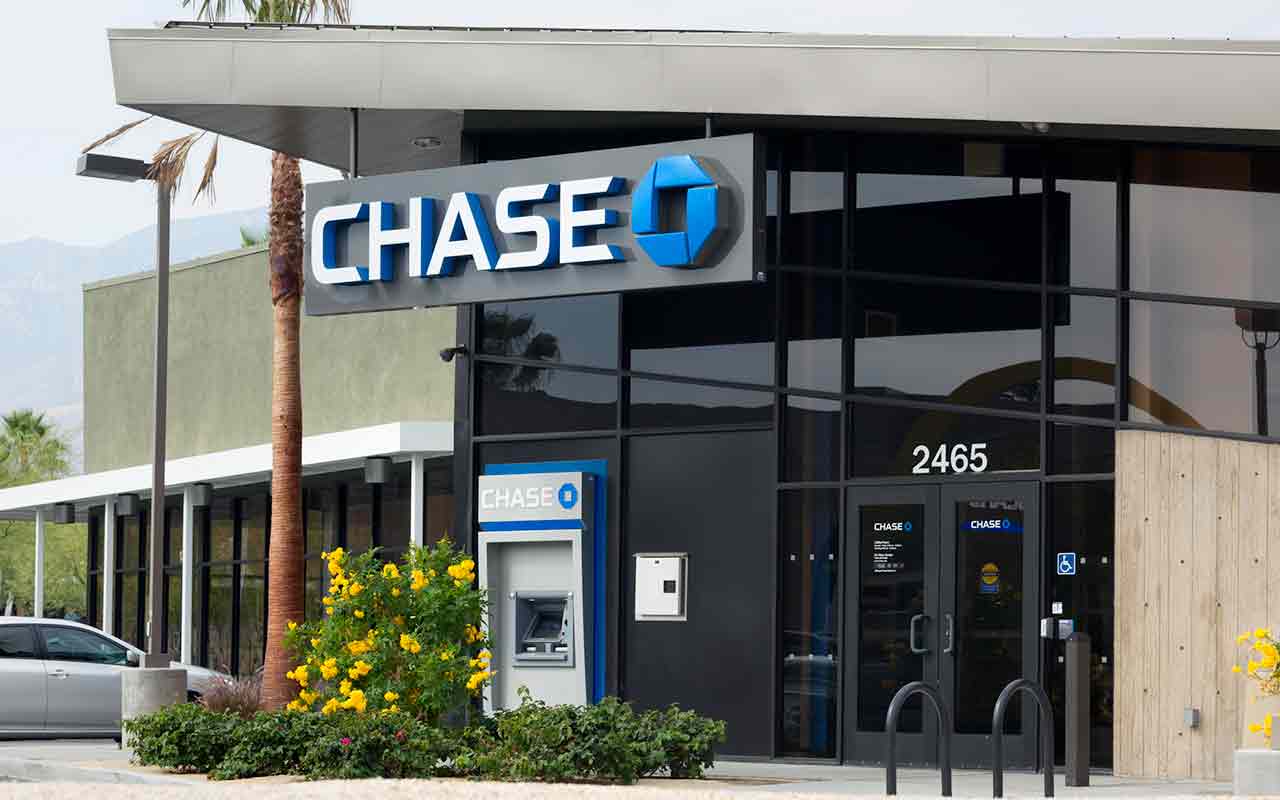
JPMorgan Chase
- Market value: $279.3 billion
- Dividend yield: 4.0%
- JPMorgan Chase (JPM, $89.05), with $3.1 trillion in assets, is the nation's largest consumer lender. The company also is largest among publicly traded U.S. bank stocks, the world's largest investment bank, No. 1 in the U.S. based on credit card volume and multifamily mortgage lending, and also a mutual fund manager. The bank serves nearly 63 million U.S. households, including 4 million small businesses.
JPMorgan grew core loans 2% last year to $958.8 billion, increased overall deposits 5% to $1.56 trillion and broadened its market share while maintaining strong expense discipline. Its 55% expense ratio compares favorably to peer levels (57% to 73%), and its 19% return on common tangible equity (ROTCE) was 4 percentage points higher than the next highest competitor, Bank of America (BAC).
This lending giant has delivered record revenues and net income nine times in the past 10 years and entered 2020 from a position of exceptional financial strength and liquidity, as evidenced by its Tier 1 capital ratio of 12.4%, which is well above the 9.0% regulatory minimum. (The Tier 1 capital ratio measures the bank's risk-adjusted assets versus equity and is a key measure of liquidity.) JPM has improved its payout for nine years in a row, and its payout ratio is a conservative 40% of profits ... though that number jumps to about 74% based on analysts' expectations for this year's coronavirus-hit profits.
JPMorgan Chase is already better prepared than most lenders to grow during a recession; internal stress tests indicate that JPM would be able to increase lending even if GDP drops by 35% this year. That hasn't stopped investors from selling JPM shares off by 35% since the bull-market high, of course. A lack of financial activity and extraordinarily low interest rates were among the various factors working against JPMorgan in Q1 as it posted just 78 cents per share in earnings – less than half of what analysts expected.
Nonetheless, Keefe, Bruyette and Woods analyst Brian Kleinhanzl thinks JPMorgan Chase will be a standout in the event of a recession. In fact, he even upgraded JPMorgan Chase to Outperform (equivalent of Buy) in early April.
SBA loans are a small component of JPMorgan's diversified business. But the bank was the seventh-largest SBA lender overall last year, and doling out these waves of loans should provide a small boost to its operations.
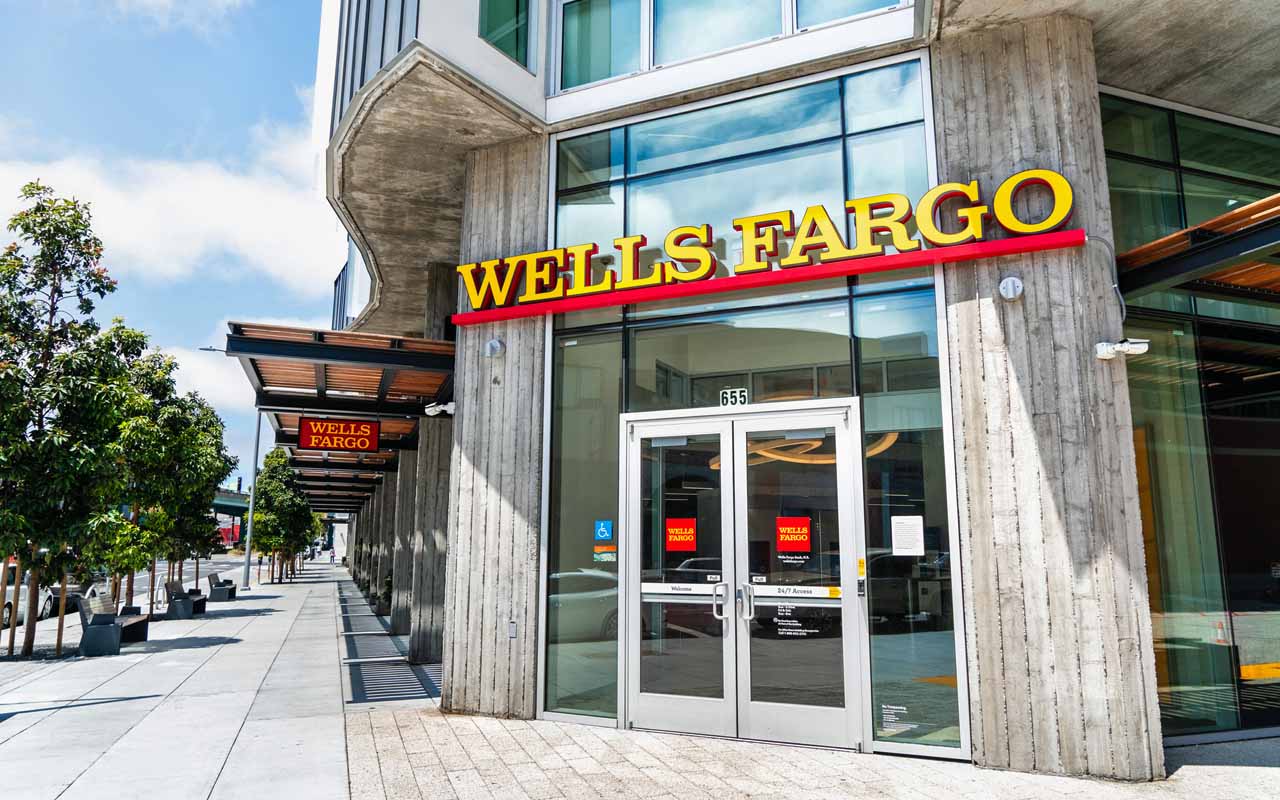
Wells Fargo
- Market value: $109.9 billion
- Dividend yield: 7.6%
With $2 trillion in assets, Wells Fargo (WFC, $26.84) ranks as the fourth largest U.S. bank. Wells Fargo provides banking, investment and mortgage products, as well as consumer and commercial finance services, through 7,400 branch offices nationwide.
Although Wells Fargo's EPS declined 5% last year as a result of litigation and remediation costs related to past sales practices, loans grew 1% to $962.3 billion, deposits increased 3% to $1.3 trillion and net charge-offs remained near historic lows at 0.29%, suggesting a high-quality portfolio. The company also hiked its dividend 13% in 2019, signaling its confidence in the future. It even repurchased 10% of its shares, marking its seventh consecutive year of big share buybacks.
Wells Fargo is focused on cutting expenses and has reduced its branch network by 12% over three years while simultaneously growing its online customer base 24%. Its number of checking account customers has risen nine quarters in a row. And the bank is well-capitalized, ending 2019 with a Tier 1 capital ratio of 11.1%
Nonetheless, WFC had a brutal first quarter that saw the company earn just 1 cent per share, versus analysts estimates of 33 cents. Like JPM and many other bank stocks, Wells Fargo's results suffered from a build-up of reserves as it prepares for loan defaults and nonpayments.
Still, Wells Fargo serves one of every three U.S. households and over 3 million small business customers. As a result, the bank is well-positioned for SBA loan growth. Wells Fargo ranked as the third most active SBA lender in 2019, closing 1,264 loans valued at $279.2 million.
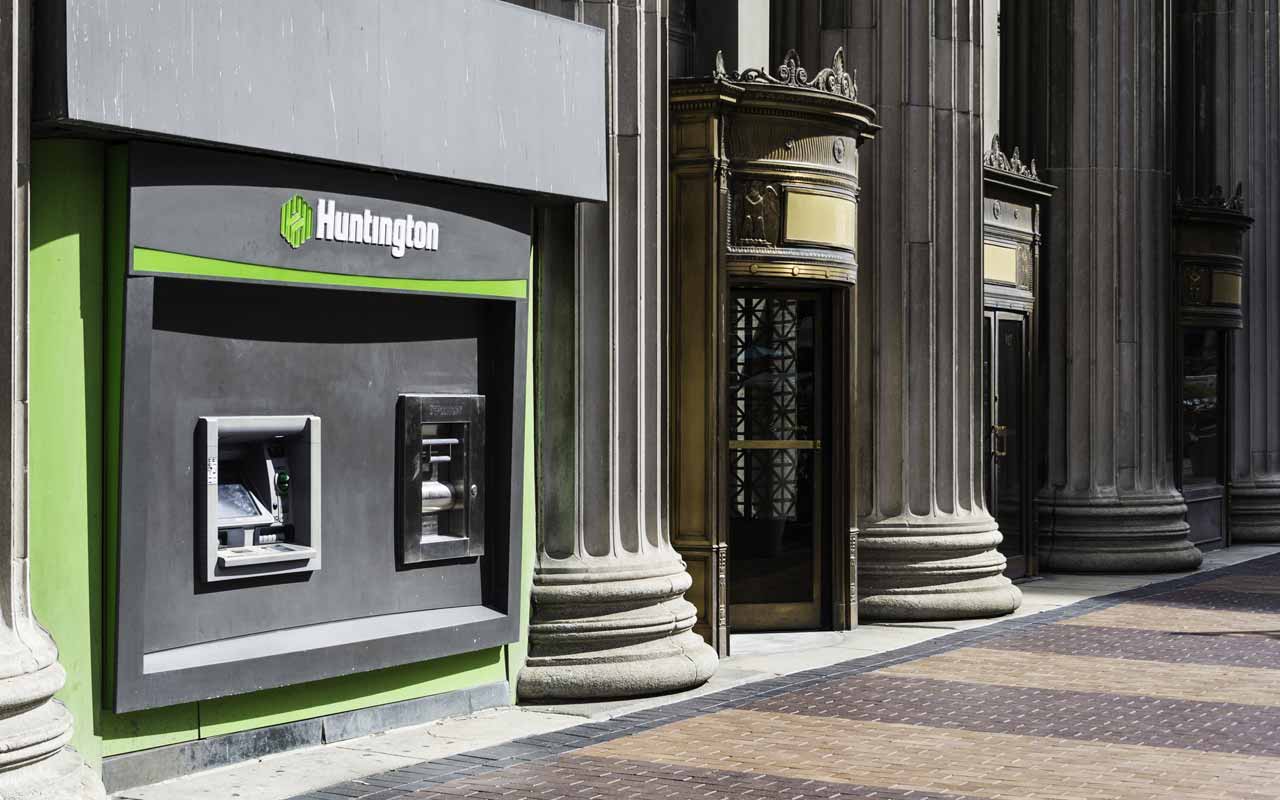
Huntington Bancshares
- Market value: $8.0 billion
- Dividend yield: 7.7%
- Huntington Bancshares (HBAN, $7.80) is among the regional bank stocks that provide SBA loans. This Ohio-based bank operates across seven Midwestern states via 856 branches, and it boasts $109 billion of assets. Huntington's services include consumer and small business lending, wealth management, brokerage, trust and insurance services.
Huntington has improved its efficiency ratio five years in a row and consistently outperformed its peer group on expense control and profitability measures. The bank delivered a 56.6% efficiency ratio last year and an ROTCE of 16.9%. Its high Tier 1 capital ratio (11.3%) suggests above-average liquidity.
Loans are a 50/50 mix of consumer and commercial lending and improved by 2% last year to nearly $75 billion. Average deposits increased 1% to $79.2 billion. The bank's dividends have increased nine years in a row, and by more than 20% annually over the past five years.
A J.D. Power survey of small business customers last year gave Huntington top marks for customer satisfaction for the second year in a row. The bank also received top rankings for products and fees, convenience and channel activities. Relating to SBA loans: Huntington Bancshares was the fifth largest SBA lender overall last year, and the Midwest's top SBA lender.
Baird analyst David George recently recommended that investors add this high-quality bank to their portfolios. He likes HBAN's steadily rising expense discipline, declining risk and use of interest rate hedges to maintain better interest spreads than peers. Nonetheless, investors should brace themselves for a rough Q1 report, due out before Thursday's open. Analysts are looking for a sub-1% decline in revenues to $1.15 billion, but a nasty 53% drop in profits to 17 cents per share.
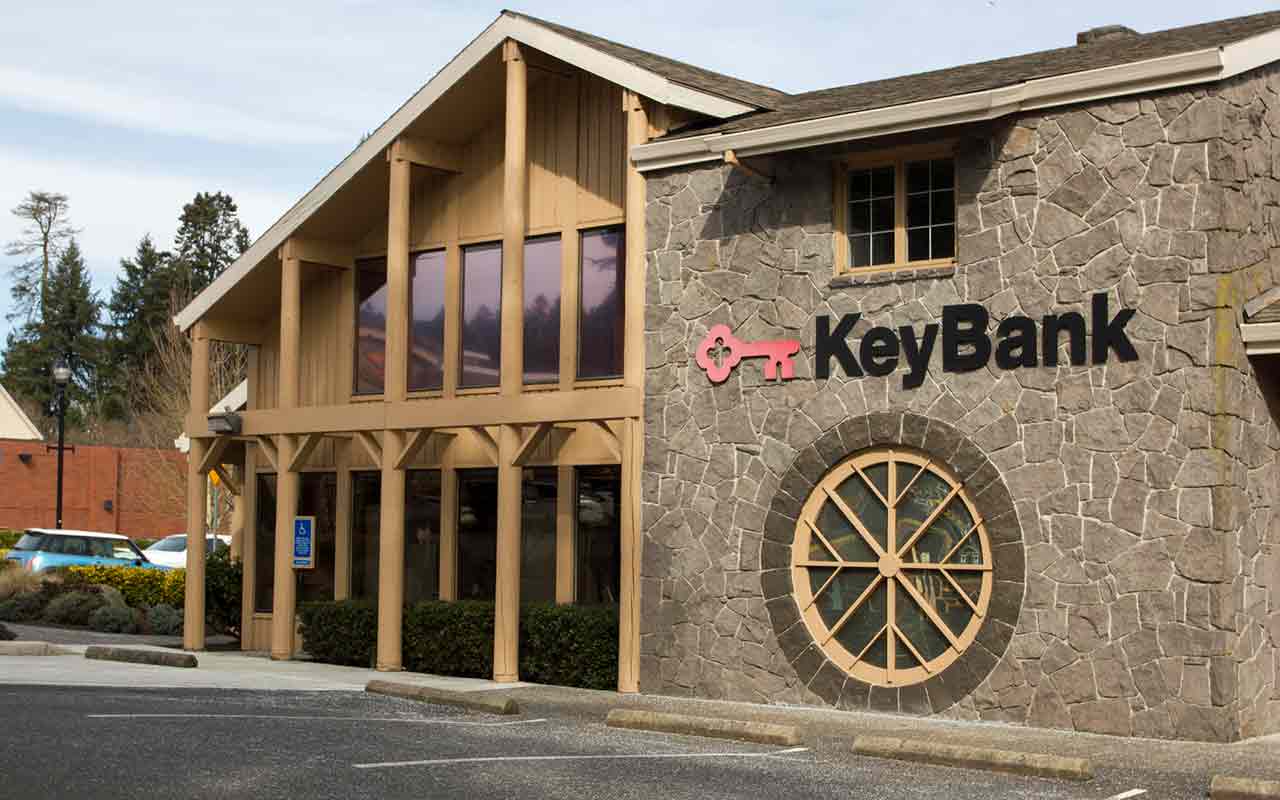
KeyCorp
- Market value: $10.1 billion
- Dividend yield: 7.2%
- KeyCorp (KEY, $10.32), headquartered in Cleveland, is one of the nation's top financial services providers, with total assets of approximately $145 billion. Through its KeyBank subsidiary, it provides deposits, lending, cash management and investment services via a network of nearly 1,100 branches across 15 states.
Much of KeyCorp's recent growth is attributable to acquisitions, which have helped the bank diversify its loan portfolio, strengthen its core deposit franchise and improve efficiencies. Commercial mortgages comprise 90% of the commercial loan portfolio, and the bank has relatively few risky construction loans. Net charge-offs remained low at 0.42%, although the bank did take some fraud-related charges in the December quarter. Adjusting for these, net charge-offs were 0.35%, which is less than many other commercial banks.
KeyCorp's average loan portfolio grew nearly 5% last year to $93.6 billion and average deposits rose 4% to $112.6 billion, reflecting strength in the retail banking franchise and a record year for mortgage originations. The bank has increased dividends nine years in a row, and at a 24% annual pace over five years. The payout is plenty manageable under normal circumstances, though it could gobble up all of the company's profits this year if analysts' full-year earnings estimates are on the mark.
However, KeyCorp has a 20-year track record of SBA lending and was among the program's top 10 lenders last year, making it a clear beneficiary of the Senate's latest expansion to this lending program. The bank offers SBA loans across 18 states.
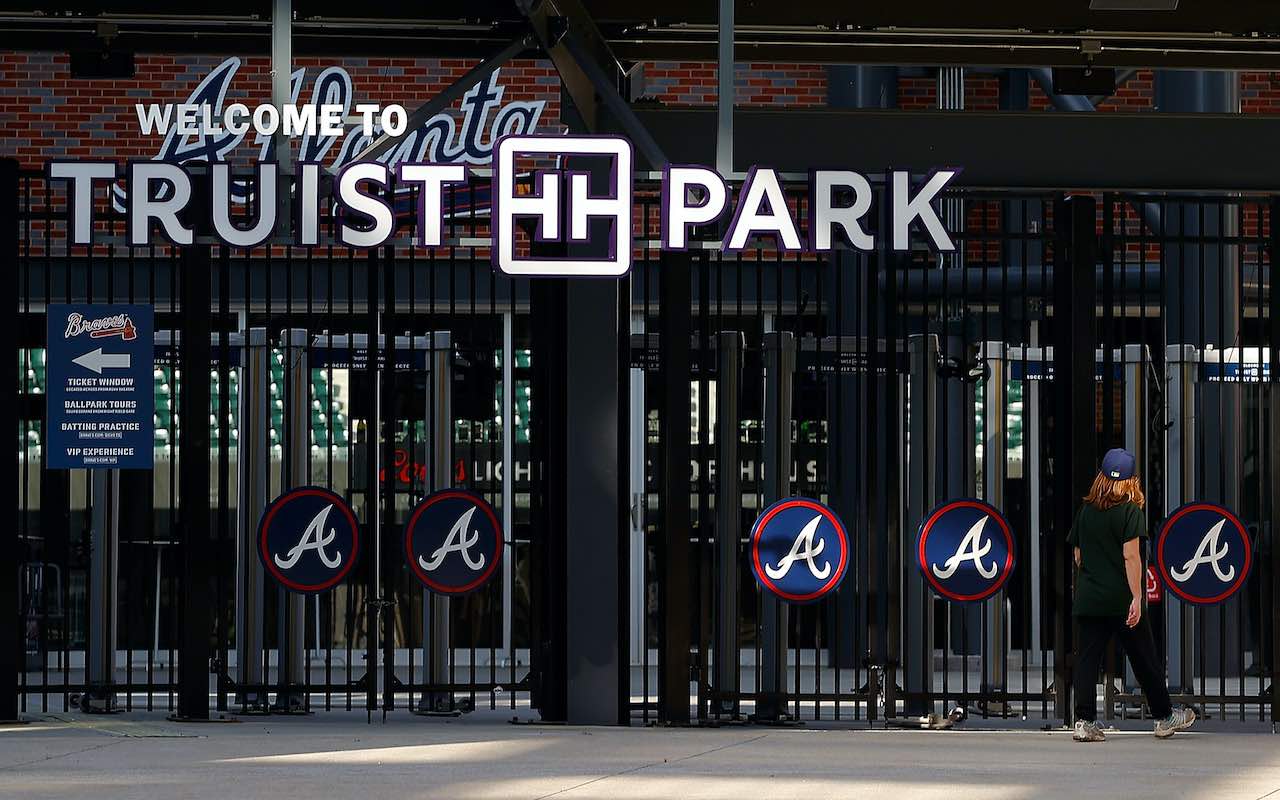
Truist Financial
- Market value: $45.7 billion
- Dividend yield: 5.3%
In December, BB&T merged with SunTrust to become Truist Financial (TFC, $34.03), the sixth largest U.S. commercial bank by asset size and among a few so-called super-regional bank stocks. The merged entity boasts $506 billion in assets and ranks No. 2 for deposit market share in the top 20 U.S. metropolitan markets. The bank is headquartered in North Carolina and serves approximately 10 million households, primarily across the southeastern U.S.
The $319.2 billion loan portfolio includes $154 billion contributed by SunTrust and is relatively low risk, comprised mainly of $149.2 billion of commercial and industrial loans, $53.1 billion of residential mortgages and $27.6 billion of home equity loans. Excluding merger-related costs, the bank delivered a relatively attractive 53.4% efficiency ratio in the first quarter and 13.2% ROTCE – both numbers were considerably lower than year-end 2019 totals, however. Net charge-offs were 0.40% of average loans and leases last year.
Truist has identified $1.6 billion of annualized net expense savings to be realized over three years and targets an improvement in its efficiency ratio to a low 50% range and ROTCE in a low 20% range under normal circumstances.
Baird analyst David George upgraded his rating on TFC stock to Outperform in mid-March. He cites the bank's great Southeastern footprint and unique growth opportunities presented by its merger with SunTrust as reasons for a high rating. The company also received a slew of Buy ratings April 21 after the company beat first-quarter earnings expectations.
Truist was among the nation's top 20 SBA lenders last year, and should enjoy some lift from Washington's expansion of the SBA loans program.
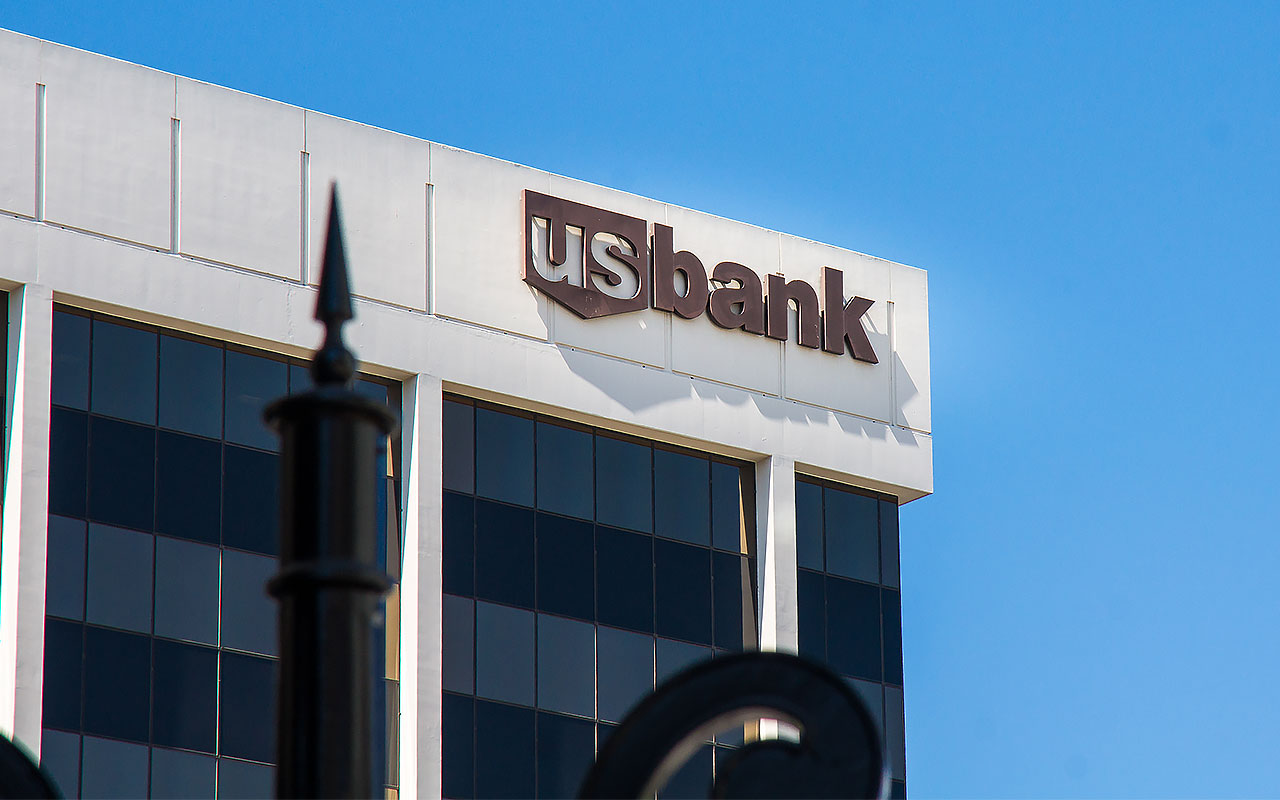
U.S. Bancorp
- Market value: $49.8 billion
- Dividend yield: 5.1%
- U.S. Bancorp (USB, $32.73) is the nation's fifth largest commercial bank. This Minneapolis-based super-regional bank stock operates nearly 2,800 branches across 25 states offering services such as consumer and business banking, payment services, corporate and commercial banking, and wealth management. It principally serves the Midwest and West Coast.
U.S. Bancorp ended 2019 with loans up nearly 4% year-over-year to $294.9 billion and deposits increasing nearly 7% to $365.6 billion. Net charge-offs were a bit high at 0.52% of average loans, but the bank's adjusted efficiency ratio was solid at 55.4%. Adjusted ROTCE was also attractive at 18.1%. For the first quarter, net income did fall 28% year-over-year, but earnings per share of 72 cents easily surpassed analysts' expectations.
The bank recently formed an alliance with State Farm to take over its $11.2 billion of deposit accounts and $1.5 billion of credit card accounts. In addition, State Farm agents will cross-sell U.S. Bancorp products to their customers.
Last year, U.S. Bancorp was a top-10 SBA lender in both number of loans (fourth nationally) and dollar amount (eighth nationally). The bank's SBA lending increased 20% last year while overall SBA lending across the industry declined.
U.S. Bancorp has rewarded investors with 23%-plus annual dividend growth over the past 10 years. Baird analyst David George believes all banks have already been priced for a lengthy recession and thinks U.S. Bancorp will outperform peers due to its superior expense and risk management and higher fee exposure.

Live Oak Bancshares
- Market value: $559.2 million
- Dividend yield: 0.9%
The nation's leading SBA lender is lesser-known Live Oak Bancshares (LOB, $13.86), a comparatively small North Carolina bank and the smallest player on this list of bank stocks.
Live Oak's main business is issuing loans guaranteed by the Small Business Administration, the USDA Rural Energy for America Program (REAP) and other government programs designed to help small businesses.
The bank has more than tripled its asset base since going public five years ago and grew the loan portfolio 43% last year by opting to retain a larger portion of its loans eligible for sale on its balance sheet. This action was taken to reduce earnings volatility and improve the predictability of earnings models. Live Oak ended 2019 with $3.6 billion of loans and $4.2 billion of deposits on its balance sheet.
The bank has no branch offices and originates all its loans online. This structure eliminates branch infrastructure costs that cost the typical bank 1% to 2% of funds every year. Live Oak's fintech investments have been substantial, however, which has contributed to a comparatively high 75.3% efficiency ratio.
One benefit of the bank's exclusive focus on SBA lending is high recurring fee revenues, which grew nearly 15% last year. These recurring revenues have enabled the bank to deliver three years in a row of nearly 20% annual dividend growth.
Live Oak Bancshares originated more than $619 million of SBA loans last year. And promising to shareholders: The stock has held up much better than many of the nation's more traditional banks, at a 24% loss through the bear market so far. The company will report Q1 numbers ahead of the April 23 opening bell.
Profit and prosper with the best of Kiplinger's advice on investing, taxes, retirement, personal finance and much more. Delivered daily. Enter your email in the box and click Sign Me Up.

Lisa currently serves as an equity research analyst for Singular Research covering small-cap healthcare, medical device and broadcast media stocks.
-
 How to Safely Open an Online Savings Account
How to Safely Open an Online Savings AccountOnline banks offer generous APYs that most brick-and-mortar banks can't match. If you want to make the switch to online but have been hesitant, I'll show you how to do it safely.
-
 7 Ways to Age Gracefully Like the Best Stock Photo Seniors
7 Ways to Age Gracefully Like the Best Stock Photo SeniorsAs a retirement editor, I've gleaned valuable wisdom (and a lot of laughs) from one older couple that tops the seniors' stock photo charts.
-
 My First $1 Million: Banking Executive, 48, Southeast U.S.
My First $1 Million: Banking Executive, 48, Southeast U.S.Ever wonder how someone who's made a million dollars or more did it? Kiplinger's My First $1 Million series uncovers the answers.
-
 Dow Rises 497 Points on December Rate Cut: Stock Market Today
Dow Rises 497 Points on December Rate Cut: Stock Market TodayThe basic questions for market participants and policymakers remain the same after a widely expected Fed rate cut.
-
 JPMorgan's Drop Drags on the Dow: Stock Market Today
JPMorgan's Drop Drags on the Dow: Stock Market TodaySmall-cap stocks outperformed Tuesday on expectations that the Fed will cut interest rates on Wednesday.
-
 Crypto Trends to Watch in 2026
Crypto Trends to Watch in 2026Cryptocurrency is still less than 20 years old, but it remains a fast-moving (and also maturing) market. Here are the crypto trends to watch for in 2026.
-
 What Fed Rate Cuts Mean For Fixed-Income Investors
What Fed Rate Cuts Mean For Fixed-Income InvestorsThe Fed's rate-cutting campaign has the fixed-income market set for an encore of Q4 2024.
-
 Stocks Swing in Volatile Session: Stock Market Today
Stocks Swing in Volatile Session: Stock Market TodayThe main indexes fell sharply in early trading on rising China tensions, but rebounded thanks to encouraging bank earnings.
-
 Dow Adds 587 Points as Stocks Bounce: Stock Market Today
Dow Adds 587 Points as Stocks Bounce: Stock Market TodayThe main indexes rebounded sharply Monday after President Trump took a calmer stance toward China.
-
 The Most Tax-Friendly States for Investing in 2025 (Hint: There Are Two)
The Most Tax-Friendly States for Investing in 2025 (Hint: There Are Two)State Taxes Living in one of these places could lower your 2025 investment taxes — especially if you invest in real estate.
-
 The Final Countdown for Retirees with Investment Income
The Final Countdown for Retirees with Investment IncomeRetirement Tax Don’t assume Social Security withholding is enough. Some retirement income may require a quarterly estimated tax payment by the September 15 deadline.
